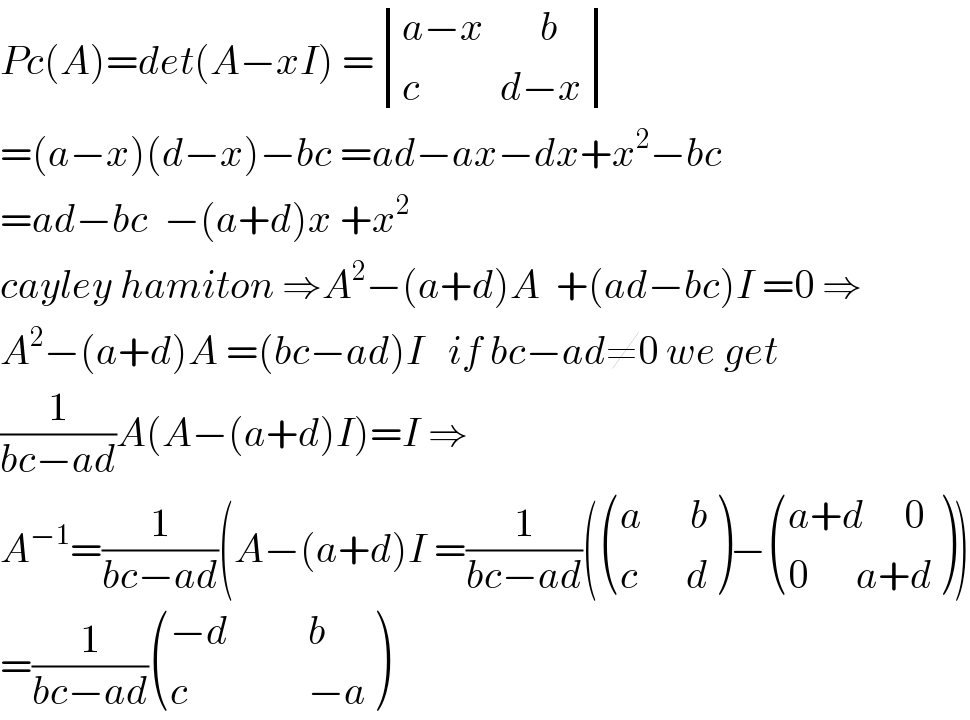
Question and Answers Forum
Previous in Matrices and Determinants Next in Matrices and Determinants
Question Number 78670 by berket last updated on 19/Jan/20
![let A= [((a b)),((c d)) ]use the augmented matrix[A I] and elementary row operation to show A^(−1) = (1/(ad bc)) [((a b)),((c d)) ]and show that det(A^(−1) )=(1/(det(A)))](Q78670.png)
Commented by abdomathmax last updated on 20/Jan/20

Commented by abdomathmax last updated on 20/Jan/20

